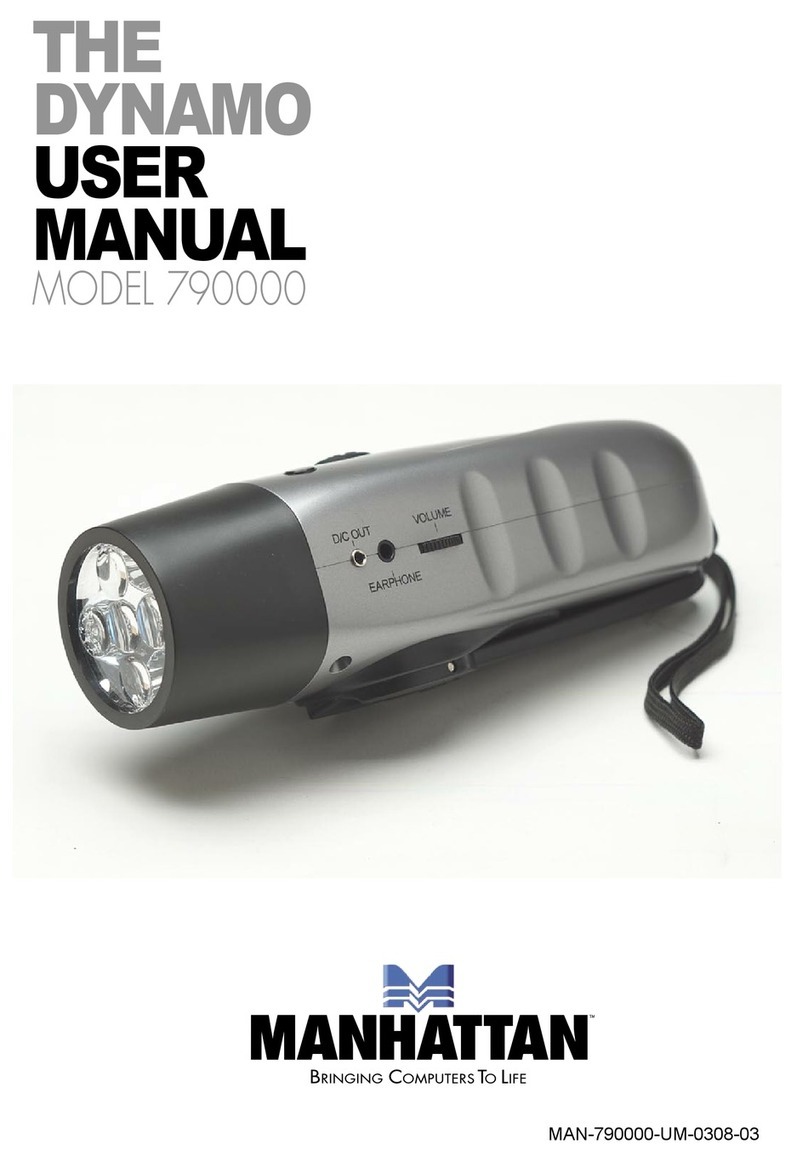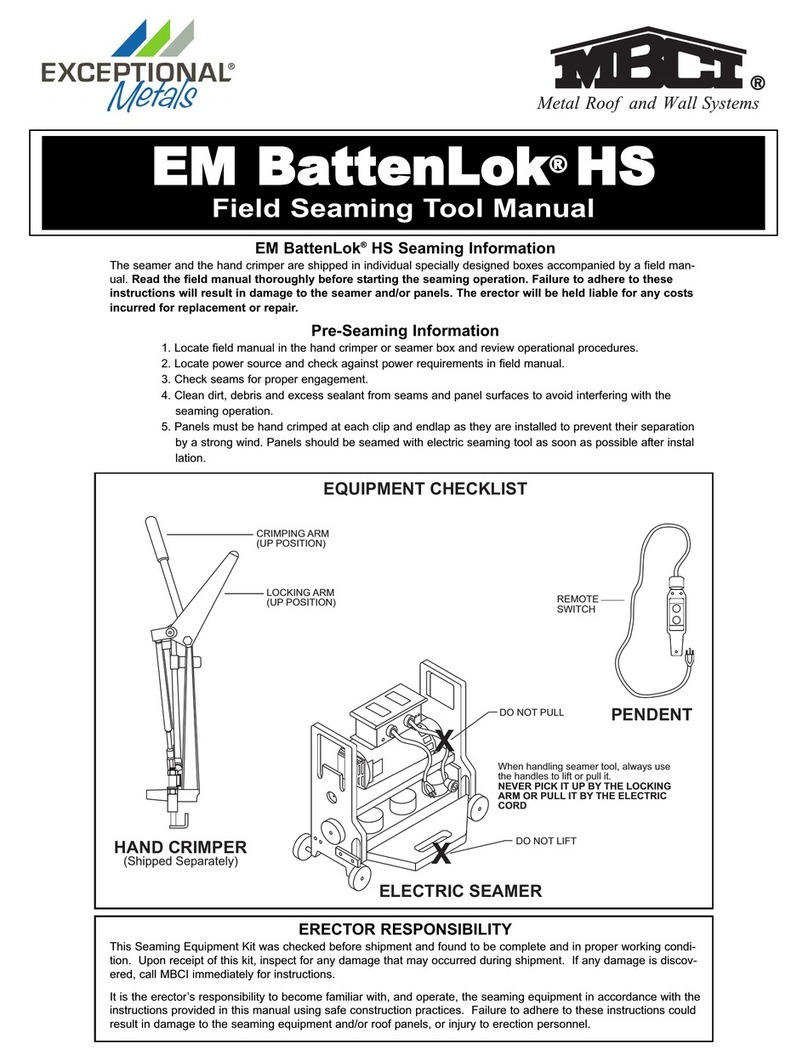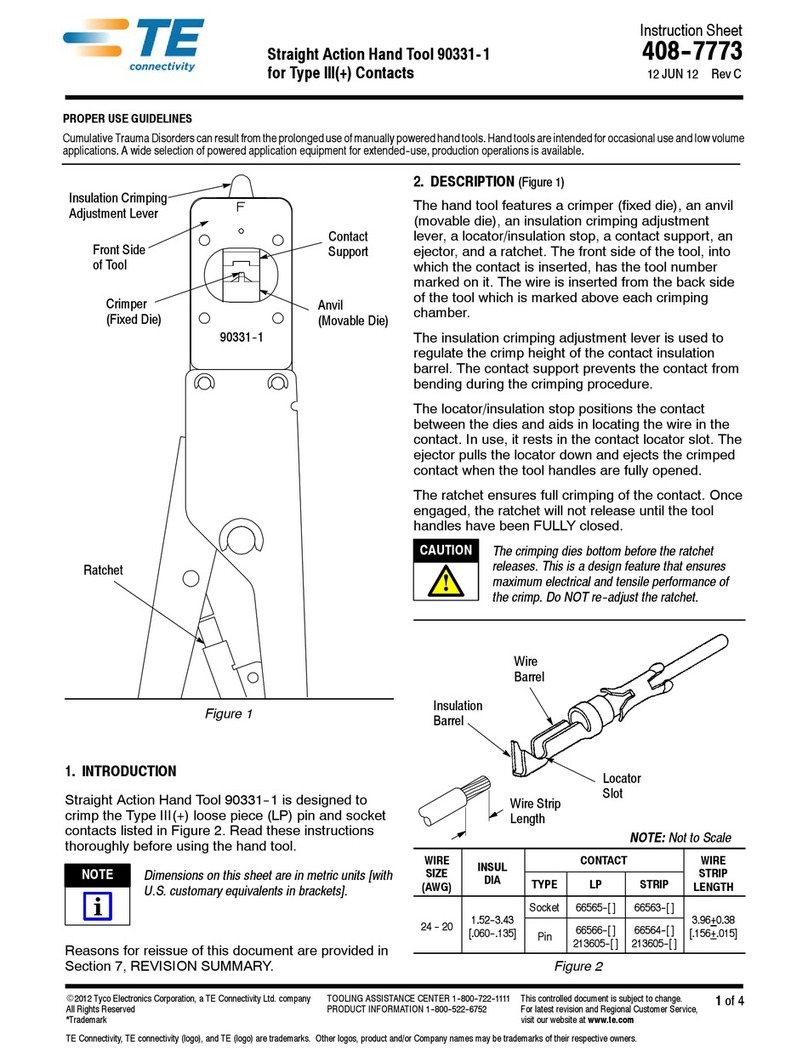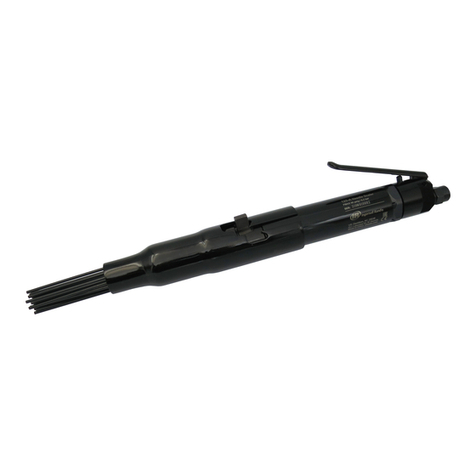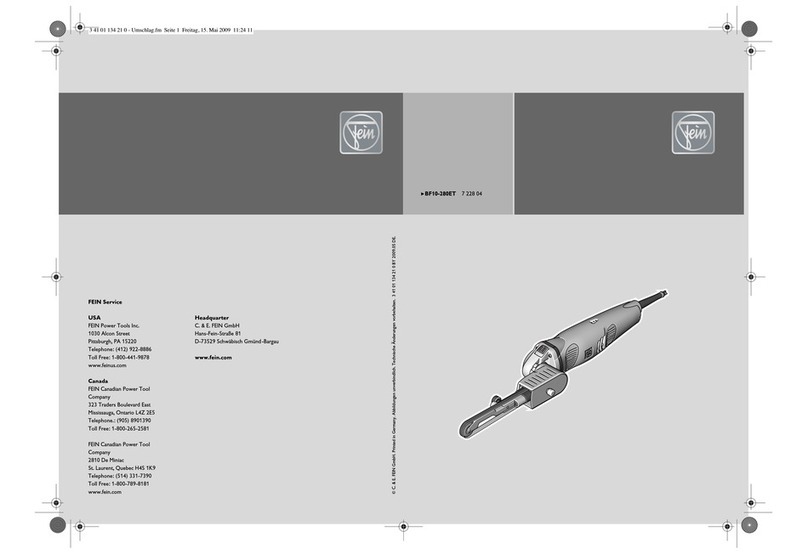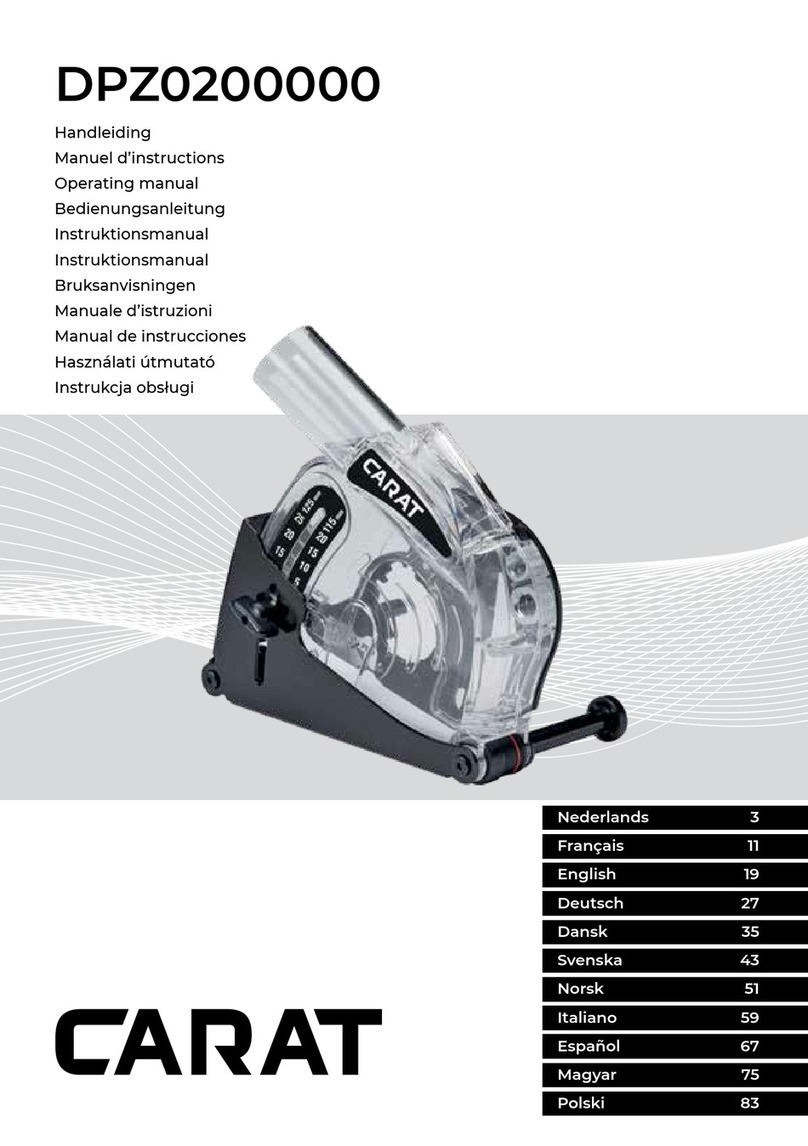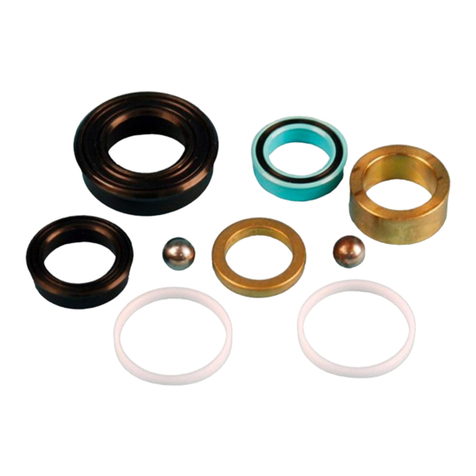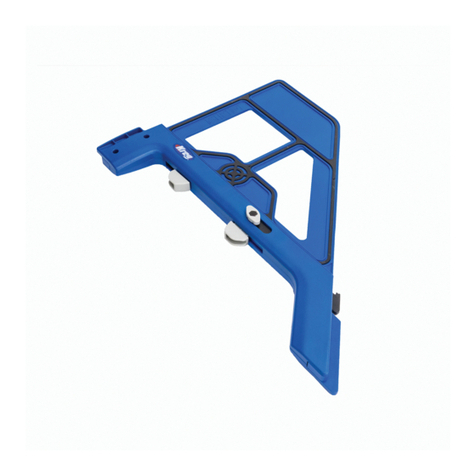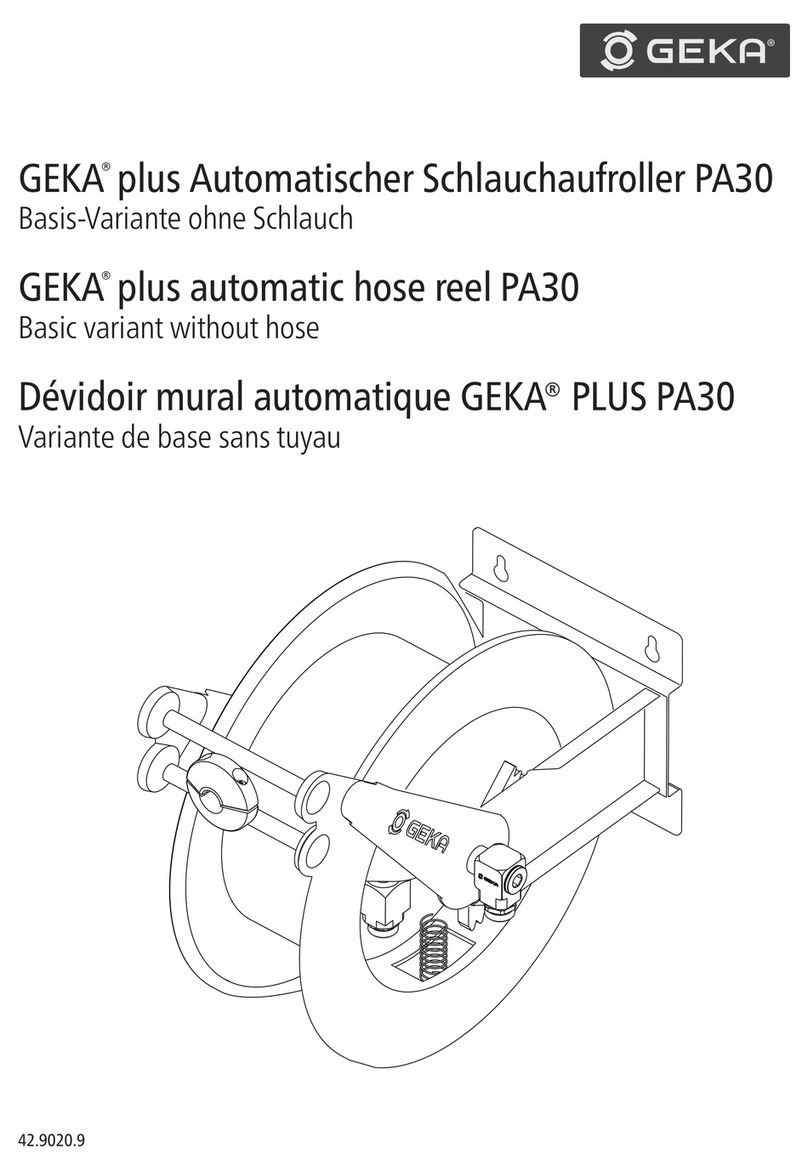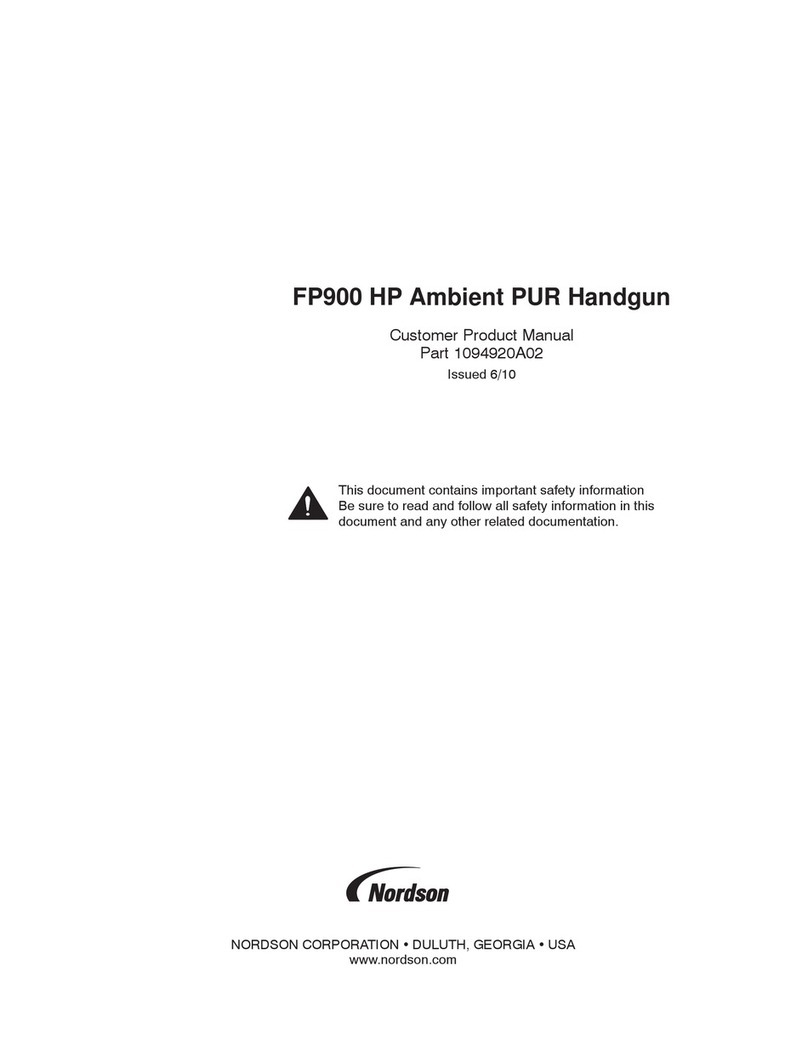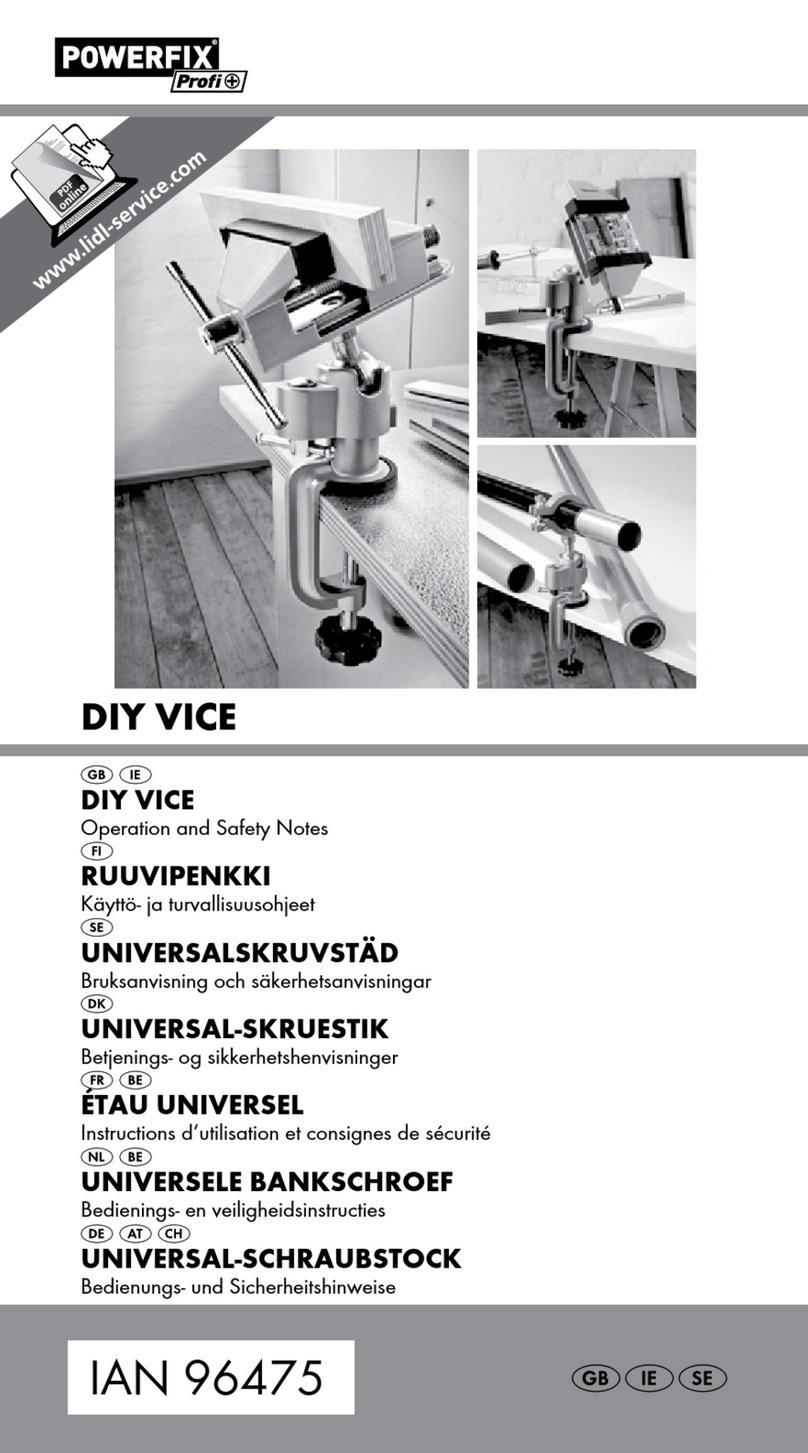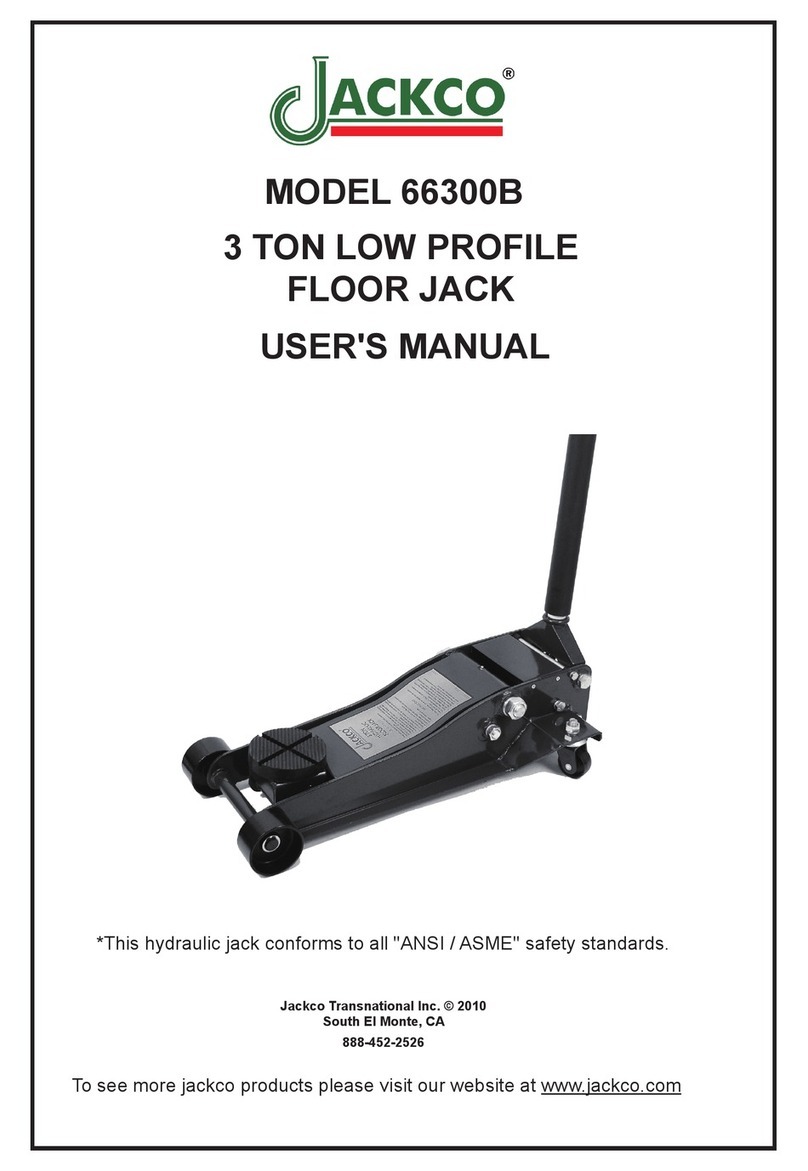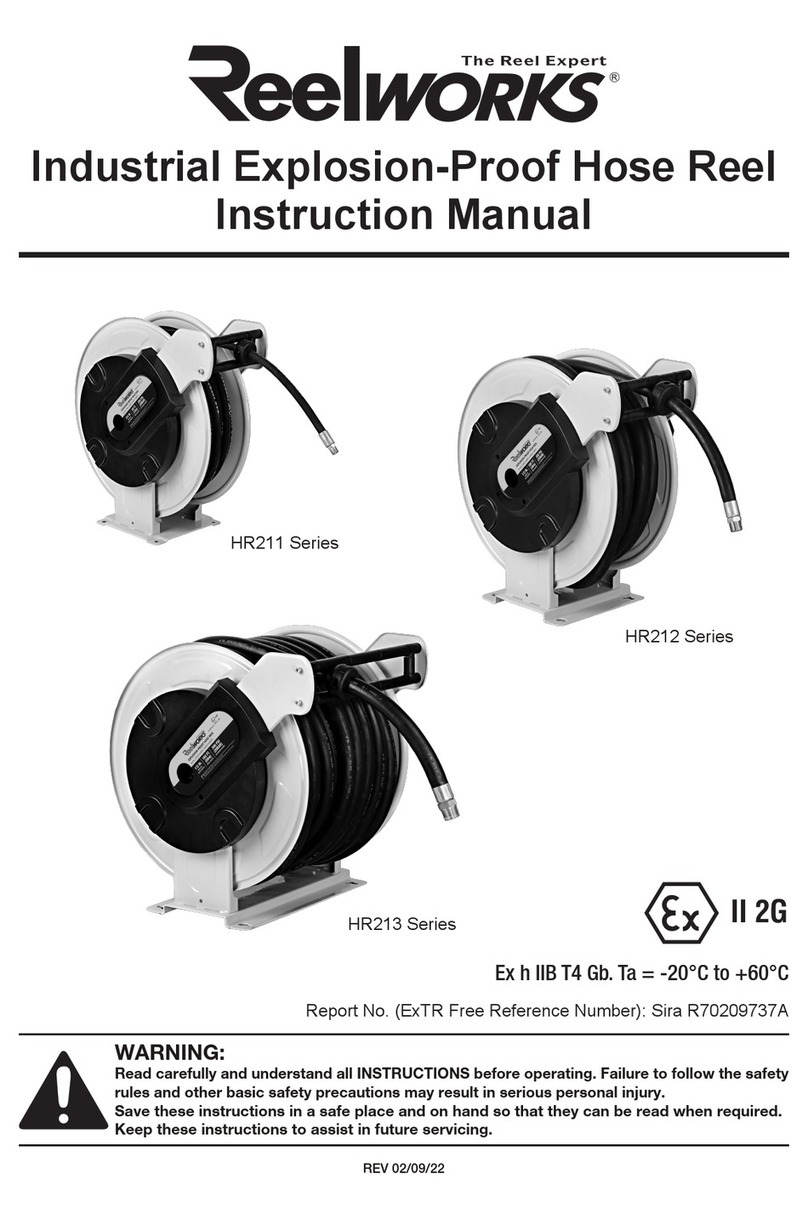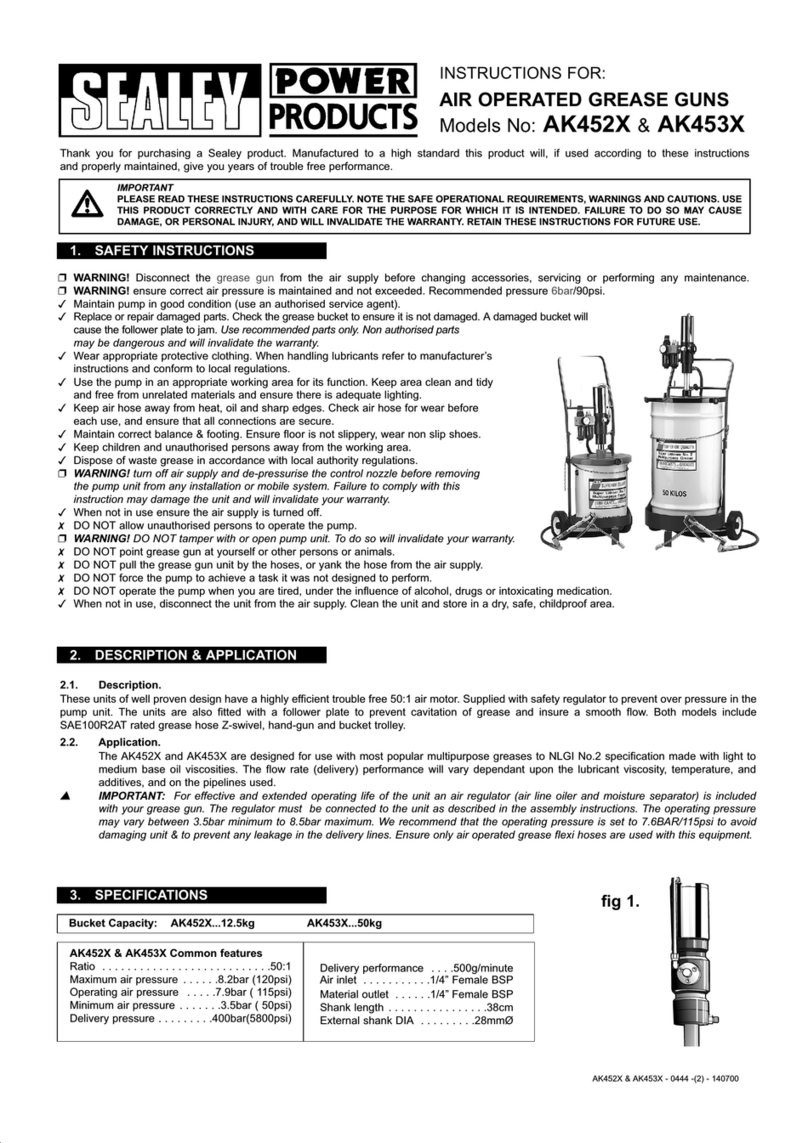goldenman TQ508-70Y User manual

TQ508-70Y
HYDRAULIC CASING TONG
OPERATION MANUAL
(Parts, Operation & Maintenance)
Goldenman Petroleum Equipment Co., Ltd
ADD:7/F, Wanda International Mansion, 67 Fuqian Street , Dongying China
TEL:+0086-546-8058779 WEBSITE:http://www.goldenman.com
E-mail:rache[email protected]

Contents
I. Introduction
II. Technical parameters
III. Installation
IV. Operation
V. Maintenance
VI. Troubleshooting
VII. Storage recommendations
VIII. Torque recommended for 95/8”-20” casing
IX. Parts List

I. Introduction
The manual includes instructions for installation, operation and maintenance, as
well as problem diagnosis information. It also includes drawings and parts list which
serve as a reference for operation and maintenance. Please read the manual and
observe maintenance instructions. If you have any questions on our manual, please
contact Goldenman Petroleum Equipment Co., Ltd.
TQ508-70Y hydraulic casing tong can work normally not only in the warm weather,
but also under extreme cold climate. Its structure is simple and reliable and can be
dismantled without the use of special tools. Only simple maintenance can elongate
its service life. All supporting parts are of high-performance alloy steel and are
strong due to appropriate heat treatment and strict machining. Important parts like
motor are imported to secure its reliable and safe running.
II. Specifications
1.Capacity Ф245-Ф508mm (95/8”-20”)
2.Maximum working pressure 20Mpa( TQ508-70Y)
18.8MPa(TQ508-65Y)
17.5MPa(TQ508-60Y)
3.Work flow 110-170L/min
Maximum flow: 200L/min
4.Speed high gear 26-43.6rpm
low gear 4.0-6.6rpm
5.Max torque high gear 8.4-10.7kN.m
low gear 48.9-70kN.m
6.High gear ratio of transmission 3.47
Low gear ration of transmission 22.37
7.Torque arm length 1320.8mm (52”)
8.Space required on pipe 254mm(10”)
9.Overall dimensions L*W*H=2080*1280*760mm3
10.Weight 1550kg
11.Connection High pressure hose port: NPT1 or M30*1.5
Return hose port: NPT1-1/4 or M42*2
Drain port: M18*1.5

12.Jaws available for casing sizes(normally): 9-5/8”, 13-3/8”, 16”, 18-5/8” and 20”
III. Assembly
1. Jaw installation (see illustration)
To install the jaws, remove the two jaw pivot bolts. Plate one jaw at a time between
the upper and lower cage plates. Align the hole in the jaw with the matching hole in
the cage plates, and insert the jaw pivot bolts.
2. Tong rig-up
The tong should be suspended by 5/8” diameter (minimum) wire rope and from a
location in the derrick high enough to assure easy handling and maneuvering of the
tong. The hang line should be placed in a position in a position as near the center of
the rotary as possible without interfering with the movement of the hoisting
equipment.
This line may eight be extended over a pulley (over 3ton) and balanced by a
counterweight equal to the weight of the tong or simply tied off in the derrick to form
a dead line. In cases where the dead line arrangement is used, it is necessary to
use the spring hanger assembly, which allows the tong to compensate for the
downward movement of the casing as the thread made-up. (See illustration-next

page):
3. Leveling tongs
To insure even gripping action of the dies, and smooth running of the rotary gear, it
is essential that the tong be hung level. This can be accomplished by making a few
simple adjustments once the tong is hung. To level the tong, turn the turnbuckles on
the bridle assembly to the desired tong alignment with the pipe. (See illustration.)

4. Back-up line
The use of a 5/8’ or larger wire rope is recommended for the tong back-up line. It
should be securely connected to the load cell at the rear of the tong and tied off to a
suitable anchor. To assure accurate operation of the load cell and torque gauge, the
back-up line should be connected at a 90 degree angle with the tong, and in the
same horizontal plane. (See illustration).
5. Lift cylinder connection
Hydraulic lift cylinder is available to favor the upward and downward movement of
the tong. The lift cylinder and power tong share the same hydraulic source. And

multi-way reverse valve and hydraulic check valve are to control their action.
Lift cylinder is installed on the top of the spring hanger assembly. Cylinder end
connects with the shackle of spring hanger assembly through connection fork. One
end of the hose is to attach oil inlet on the cylinder and the other end is to attach the
quick change joint on the multi-way reverse valve. (See illustration).
6.Hydraulic hoses
When the power unit is not running, the hydraulic hoses may be installed to the tong.
Both 1”high-pressure hose and 1-1/4”return hose are equipped with self-seal type
couplings, and care should be taken to insure complete engagement to prevent
partial closure of the check valve in the coupling.
IV. Tong Operation
1.Start up procedure
Note: Be sure the doors are closed and securely latched before power unit is
started to insure safety for operation personnel.

Start up the power unit by following operation manual of power unit. Prior to starting
engine, loosen relief valve and make an inspection to assure proper lube oil level in
the pump and engine, and hydraulic oil level in the hydraulic tank. Check all
pressure and return line hose connections to make sure they are securely installed.
Note: Failure to have these hose connections tight will stop or restrict oil flow and
result in high pressure on the power unit hydraulic system.
Start the power unit engine and make the hydraulic oil circulate for approximately
10 minutes, adjust relief valve to set the circulating pressure up to 2Mpa. Place the
tong gear shifter in low gear and control multi-reverse valve to rotate the tong slowly
in forward and reverse directions. Once this has been done and the proper size
jaws have been installed, the tong is then ready to run pipe.
2.Hydraulic control system
Multi-reverse valve controls the action of motor and lift cylinder. The hydraulic circuit
is parallel connection. Motor and lift cylinder can act individually or simultaneously.
(See illustration.)
3.Direction and speed control
Multi-reverse valve controls direction and speed of rotation. For clockwise rotation,

push the valve handle forward, and for reverse rotation, pull the valve handle in the
opposite direction. Speed in either direction is proportional to the distance that the
valve handle is moved form the center position, as the valve core of multi-reverse
valve has the throttle function.
4.High and low gear
The gearbox provides for high and low gear operation. For low gear the shifting
handle is simply move upward from neutral position, and for high gear, the shifting
handle is moved from down from neutral position. (see illustration).
Warning: Stop the tong when shifting high or low gear.
direction and speed control high and low gear control
Note: Do stop the tong when shift high and low gear.
5.Make up of casing
5.1 Align door opening with gear opening.
5.2 Place tong around casing.
5.3 Close the safety door completely.
5.4 Place the backing pin in the “make-up” hole. (See illustration)
5.5 Shift transmission into high gear.
5.6 Gently push the multi-reverse valve handle forward until casing threads begin to
make up.

Proper location of backing pin
for make-up
5.7 When casing threads begin to make up, push the valve handle to full forward
until the tong begins to stall.
5.8 Release the multi-reverse valve handle and shift to low gear.
5.9 Engage throttle and make-up casing to desired torque.
5.10 Pull the multi-reverse valve handle backward slightly to reverse tong to
disengage jaws and rotate until rotary gear aligns with the door opening.
5.11 Open the door and remove the tong from pipe.
6. Break out of casing
6.1 Align door opening with gear opening.
6.2 Place tong around casing.
6.3 Close the safety door completely.
6.4 Place the backing pin in the “break-out” hole. (see illustration)
Proper location of backing pin
for break-out

6.5 Shift transmission into high gear.
6.6 Pull the multi-reverse valve handle to full position.
6.7 It is recommended to break out in low gear until the joint is completely
unscrewed.
6.8 Push the multi-reverse valve handle forward slightly to reverse tong to
disengage jaws and rotate until rotary gear aligns with the door opening.
6.9 Open the door and remove the tong from pipe.
7.General comments
7.1 It is recommended that both idler gears be in drive position when the tong is
gripping under high torque. Also it is recommended to frequently check the
tightness of the door and make periodic adjustments to assure a secure door fit.
7.2 When making-up integral (shouldered) joints, it is essential to make up the last
turn of the threads in low gear. This reduces the tendency of an instant stop or a
sudden increase in torque, which induces high stresses to the gear train.
7.3 When pulling a string, do not employ the “snap break” method of breaking out
joints. This is accomplished by leaving slack in the “jaw-pipe” engagement, and
then quickly pulling the throttle valve control lever allowing the tong to snap into its
high torque conditions. This method, although very affective in breaking out joints,
highly stresses the gear train and very frequently causes gear breakage. And this
method is also dangerous to operating personnel.
8.Extreme cold weather operation procedures
8.1 Consult operation manual of the power unit for any possible cold weather
operation precautions.
8.2 Select gear and bearing lubricant compatible with expected operating climate.
8.3 Select hydraulic oil compatible with expected operating climate.
8.4 After the power unit has been started, in cold weather climates, the hydraulic oil
should be allowed to circulate up to approximately 20 minutes prior to activating the
casing tong.
8.5 When cleaning tong parts in extreme cold climates, it is important to dry the
tong prior to lubricating.

V. Maintenance
It is suggested that a regular maintenance program be established t assure
dependable operation of the hydraulic tong. Clean, lubricate and adjust the tong in
accordance with the following recommendations to enhance the life expectancy of
the tong and assure safety to operating personnel.
1.Cleaning
The tong should be thoroughly cleaned with a good petroleum base cleaning agent
after each job, prior to storage. It is recommended that periodically the motor and
valve assembly be removed, along with the top tong plate, so that cams, rollers and
gears can be properly cleaned.
2.Lubrication
A good grade of multipurpose bearing lubricant is recommended at the completion
of each job prior to storage. See the following diagram for lubricating sites.
2.1 Clutch bearings
Grease should be applied to these bearings through the grease fittings (8) in the
motor flange and the bearing seat located at the bottom face of the tong.
2.2 Triple gears
Grease should be applied to these bearings through the grease fittings (5) in the
bearing seat located at the top and bottom face of the tong.
2.3 Rotary idler and pinion idler bearings
Grease should be applied to these bearings through the grease fittings (4.6) in the
end of the shaft located at the top face of the tong.
2.4 Support rollers
Grease should be applied to these rollers through the grease fittings at the end of
the shafts located at the top and bottom face of the tong.

2.5 Big and small rollers between top and bottom face of the tong.
Coat the surface of the rollers with a thin layer of grease.
2.6 Shifting shaft
Apply grease to the shifting shaft at the bushings through the grease fitting (7).
2.7 Door latch shaft
Grease should be applied to the shaft through the grease fitting (1) at the door latch
shaft.
2.8 Door restoring rod assembly
At assembly the spring and piston should be coated with a thin layer of grease.
It is recommended that surface of cam and jaw roller should be coated with grease
when installing jaws. It is recommended to take out periodically the two side
inspection plates, and apply grease to clutch gear, gear bush and shifting shaft.
3.Adjustments
3.1Door latch adjustment
During normal operation of the tong, the door latch may experience wear which will
cause the door to develop a loose fit at the latch. When this occurs, an adjustment
can easily be made to assure a secure door fit. This is accomplished by adjusting
door latch shaft.
The door shaft located in the left door is an eccentric shaft. On the top of the shaft is
a flange plate, which has eight positioning holes. The door shaft is secured to the
left door by a 3/8” hex head bolt. To make any adjustment in door alignment,
remove the 3/8” bolt, then turn the door shaft to a appropriate angle. When desired
alignment is achieved, screw in 3/8” bolt and tighten.
Note: It is important to keep a secure fit at the doors as this helps maintain proper

gear alignment, reduce possibility of transmission impact and assures safety to
operating personnel.
2.Brake band adjustment: (see illustration)
As the tong is used, it becomes necessary at times to adjust the brake bands to
provide a smoother and more efficient jaw cam action. When brake band is loose,
cage plate will turn along with rotary gear , the jaw will not cam properly and
therefore, will not bite on the pipe. By tightening two adjustment bolts at the two
ends of the bands will tighten brake band, enough frictional resistance occurs to
allow jaws to cam properly and grip the casing.
4.Periodic check
4.1 Hanging rope and rear rope
Regular check on the hanging rope and rear rope should be done to assure safety
and reliability.
4.2 Door lock spring
To enable the door latch mechanism to snap closed properly, the springs inside the
door should have enough strength. Spring fatigue will result in a sluggish latch
operation. When this occurs, the latch springs inside the door should be replaced.
4.3 Shifting shaft
To regularly check the nut secured the shifting yoke to the shifting shaft. And the
match of shifting shaft with the guide sleeve on the housing should be precise.
4.4 Torque gauge
Periodic calibration of the torque gauge is recommended to assure accurate torque
readings.
4.5 Backing pin

After each job, check the backing pin for wear or cracks. If stress cracks or
excessive wear exists, the pin should be replaced.
5.Overhaul procedure
If the need arise to overhaul the tong, do as follows:
Note: All maintenance and overhaul can be accomplished from the top. Therefore,
the bottom plate of the tong should never be removed.
5.1 Remove the motor-valve assembly.
5.2 Disconnect and remove the linkage between the shifting handle and the shifting
shaft.
5.3 Remove the detent bolts (7/16”-14*11/2”) in the guide sleeve, and take out the
ball and spring from the groove in the shifting shaft.
5.4 Remove the motor mount. This is accomplished by removing the 5/8” bolts and
lifting the motor mount out of place.
5.5 Remove the door.
5.5.1 Remove the two restoration rods by removing the two 1/2” bolts.
5.5.2 Remove the top lock nuts from the door roller shafts.
5.5.3 Remove the grease fittings from the end of the door roller shafts and drive
the shafts out. This then allows the doors to be removed.
Note: When removing the doors make careful note of the bearing shims, which
align the doors. At reassembly of the doors after overhaul, it will still be necessary to
reassemble door bearing shims in the same sequence to assure desired door
alignment.
5.5.6 Loosen brake band. Back off the brake band adjustment bolts at two ends
until the nut is flush with the end of the bolt.
5.5.7 Remove the upper and lower jaws. Remove the three nuts on the locating
shafts, and press downward the bolts. Then the upper and lower jaws can be taken
out.
Note: To prevent the bottom cage plate from falling to damage parts or personnel, it
is recommended that the bottom cage plate be braced while removing the nuts on
the locating shafts.
5.5.8 Pull the top bearing cap from the triple gear assembly.
5.5.9 Remove the nuts and pads for the rotary and pinion idler gears.

5.5.10 Remove the 14 top roller shaft nuts.
5.5.11 Remove the 3/8” bolts around the perimeter of the tong which secure the top
plate.
5.5.12 After all the above steps, the top tong plate can be lift off providing access to
the inside of the gear case.
6. Problem Diagnosis
6.1 Hydraulic system overheating
6.1.1Excess discharge pressure (relief valve set too high).
Solution: Reset the relief valve.
6.1.2 Oil viscosity too high or too low.
Solution: Change oil.
6.1.3 Excessive internal leaking of hydraulic system
Solution: Repair or replace any worn parts.
6.1.4 Leaks in hydraulic valves.
Solution: Repair or replace.
6.1.5 Oil level in tank too low for proper cooling.
Solution: Maintain proper oil level.
6.1.6 Pump discharge being restricted.
Solution: Check operation of throttle valve or relief valve. Check all self seal
connections for proper engagement.
Note: Large pump volumes should not be allowed to remain at high pressure for a
long period of time.
6.2 Tong running too slowly
6.2.1 Pump intake line plugged.
Solution: Clean intake line.
6.2.2 Oil level in the tank is too low and intake line is beyond oil level.
Solution: Add oil.
6.2.3 Air leak in pump intake line.
Solution: Repair leak.
6.2.4 Pump speed too slow.
Solution: Check manufacturer’s speed recommendations.

6.2.5 Excessively worn or damaged pump or tong.
Solution: Replace worn parts by following manufacturer’s recommendations.
6.2.6 Viscosity of oil too high.
Solution: Change oil.
6.2.7 Restriction in line between power unit and tong.
Solution: Check self seal couplings to insure they are properly engaged.
6.2.8 Relief valve not functioning.
Solution: Repair or replace.
6.3 Tong will not develop sufficient torque
6.3.1 Relief valve not working.
Solution: To check if the relief valve is set too low, or stuck or leaking. Repair or
replace.
6.3.2 Pump speed too slow.
Solution: Check manufacturer’s speed recommendations.
6.3.3 Viscosity of oil too high and pump may not prime.
Solution: Change oil.
6.3.4 Viscosity of oil too low and system overheating.
Solution: Change oil.
6.3.5 Tong motor worn or damaged.
Solution: Repair or change the motor.
6.3.6 Bearings or gears damaged in transmission assembly, causing excessive
drag.
Solution: Repair or replace worn parts.
6.3.7 Restriction in hydraulic line between power unit and tong.
Solution: Check line. Check to insure proper engagement of self-seal coupling.
6.3.8 Defective torque gauge or load cell.
Solution: Replace defective components. Make sure gauge has been calibrated to
proper torque arm length.
6.4 Failure of jaws to grip pipe
6.4.1 Dull dies.
Solution: Replace dies.
6.4.2 Brake band insufficiently adjusted, not allowing jaws to cam properly.
Solution: Adjust brake bands to give proper resistance to cage plates.

6.4.3 Jaw roller broken or worn.
Solution: Replace roller.
6.5 Failure of tong
6.5.1Pressure too low.
Solution: Reset relief valve.
6.5.2 Multi-reverse valve damaged.
Solution: Repair or change the valve.
6.5.3 Clutch damaged.
Solution: Repair or replace damaged parts.
6.6 General comments
The following factors contribute highly to inefficient hydraulic operation.
6.6.1 Failure to change oil frequently enough, or have proper filtration.
6.6.2 Failure to select proper hydraulic oil.
6.6.3 Defective packing or seals in components of the hydraulic system.
6.6.4 Inadequate understanding of hydraulic system components, causing
inadequate operation of the equipment.
VII. Storage Recommendations.
1 When storing the tong, an effort should be made to locate the unit in a clean, dry
and ventilated area.
2 The tong, while in storage, should be well lubricated.
3 Wearable parts, if required to remain in storage for a long period of time, should
be coated with a good corrosion inhibitor, and should be stored in a good dry
environment.
4 All O-rings, seals, packings, gaskets, etc., should be stored in a good moisture
proof, airtight container.
5 All bearings should be well lubricated and stored in a dust free box or container,
protected from moisture.

VIII. Recommended Torque for 8teeth round thread 85/8″-20″casing
(Extracted from API RP 5C1-1999)
(1) (2) (3) (4) (5) (6) (7) (8) (9)
ID No. O. D.
Torque
ST&C LT&C
Size Weight
D Dm
(in) (mm)Steelgrade
ft-lb N.m ft-lb N.m
8.625 28.00 8.625 219.08 H40 2330 3150 — —
8.625 32.00 8.625 219.08 H40 2790 3780 — —
8.625 24.00 8.625 219.08 J55 2440 3310 — —
8.625 32.00 8.625 219.08 J55 3720 5050 4170 5660
8.625 36.00 8.625 219.08 J55 4340 5580 4860 6590
8.625 24.00 8.625 219.08 K55 2630 3570 — —
8.625 32.00 8.625 219.08 K55 4020 5460 4520 6130
8.625 36.00 8.625 219.08 K55 4680 5880 5260 7140
8.625 24.00 8.625 219.08 M65 2850 3860 — —
8.625 28.00 8.625 219.08 M65 3620 4910 — —
8.625 32.00 8.625 219.08 M65 4350 5890 4870 6600
8.625 36.00 8.625 219.08 M65 5060 6860 5670 7690
8.625 40.00 8.625 219.08 M65 — — 6490 8800
8.625 36.00 8.625 219.08 L80 — — 6780 9190
8.625 40.00 8.625 219.08 L80 — — 7760 10,530
8.625 44.00 8.625 219.08 L80 — — 8740 11,840
8.625 49.00 8.625 219.08 L80 — — 9830 13,320
8.625 36.00 8.625 219.08 N80 — — 6880 9330
8.625 40.00 8.625 219.08 N80 — — 7880 10,680
8.625 44.00 8.625 219.08 N80 — — 8870 12,020
8.625 49.00 8.625 219.08 N80 — — 9970 13,520
8.625 36.00 8.625 219.08 C90 — — 7490 9330
8.625 40.00 8.625 219.08 C90 — — 8580 10,680
8.625 44.00 8.625 219.08 C90 — — 9650 12,020
8.625 49.00 8.625 219.08 C90 — — 10,850 14,710
8.625 36.00 8.625 219.08 C95 — — 7890 10,700
8.625 40.00 8.625 219.08 C95 — — 9040 12,260
8.625 44.00 8.625 219.08 C95 — — 10,170 13,790
8.625 49.00 8.625 219.08 C95 — — 11,440 15,510

(1) (2) (3) (4) (5) (6) (7) (8) (9)
ID No. O. D.
Torque
ST&C LT&C
Size Weight
D Dm
(in) (mm)Steelgrade
ft-lb N.m ft-lb N.m
8.625 36.00 8.625 219.08 T95 — — 7890 10,700
8.625 40.00 8.625 219.08 T95 — — 9040 12,260
8.625 44.00 8.625 219.08 T95 — — 10,170 13,790
8.625 49.00 8.625 219.08 T95 — — 11,440 15,510
8.625 40.00 8.625 219.08 P110 — — 10,550 14,300
8.625 44.00 8.625 219.08 P110 — — 11,860 16,090
8.625 49.00 8.625 219.08 P110 — — 13,350 18,100
8.625 49.00 8.625 219.08 Q125 — — 14,960 20,280
9.625 32.30 9.625 244.48 H40 2540 3440 — —
9.625 36.00 9.625 244.48 H40 2940 3990 — —
9.625 36.00 9.625 244.48 J55 3940 5340 4530 6140
9.625 40.00 9.625 244.48 J55 4520 6120 5200 7050
9.625 36.00 9.625 244.48 K55 4230 5740 4890 6630
9.625 40.00 9.625 244.48 K55 4860 6950 5610 7610
9.625 36.00 9.625 244.48 M65 4600 6230 5290 7170
9.625 40.00 9.625 244.48 M65 5280 7150 6070 8230
9.625 43.50 9.625 244.48 M65 — — 6790 9210
9.625 47.00 9.625 244.48 M65 — — 7450 10,100
9.625 40.00 9.625 244.48 L80 4600 6230 7270 9860
9.625 43.50 9.625 244.48 L80 5280 7150 8130
11,030
9.625 47.00 9.625 244.48 L80 — — 8930 1 2,100
9.625 53.50 9.625 244.48 L80 — — 10,470 10,100
9.625 58.40 9.625 244.48 L80 — — 11,510 15,600
9.625 40.00 9.625 244.48 N80 — — 7370 10,000
9.625 43.50 9.625 244.48 N80 — — 8250 11,190
9.625 47.00 9.625 244.48 N80 — — 9050 12,270
9.625 53.50 9.625 244.48 N80 — — 10,620 14,390
9.625 58.40 9.625 244.48 N80 — — 11,670 15,820
9.625 40.00 9.625 244.48 C90 — — 8084 10,900
9.625 43.50 9.625 244.48 C90 — — 8990 12,190
9.625 47.00 9.625 244.48 C90 — — 9870 13,380
9.625 53.50 9.625 244.48 C90 ——11,570 15,690
9.625 58.40 9.625 244.48 C90 ——12,720 17,250
